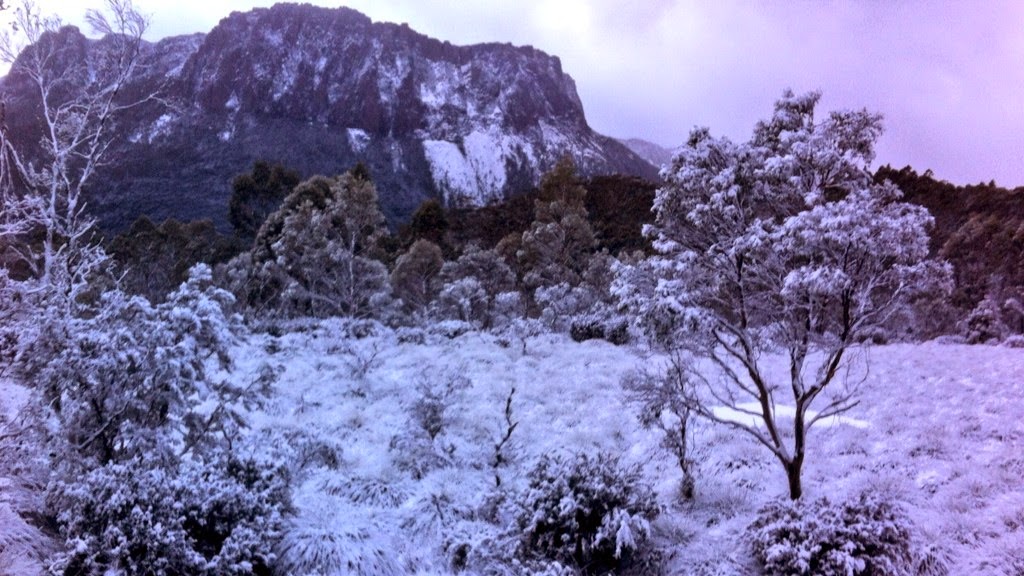Latest Glam Multi-day Walks in Australia
Comparing two of the latest guided multi-day walking experiences in Australia
 |
| Scenic Rim Trail, southern Queensland |
Looking for something more than a day walk, but not sure you want the hassles of carrying a large pack and tent? Want to finish a day's walk with a hot shower, comfy bed and a glass of wine, not a packet of two-minute noodles and a thin mattress on the ground?
Great Walks of Australia has a growing list of Australia's best multi-day walking experiences, but with strict criteria to get on their list: there must be private accommodation along the way, an emphasis on quality food and wine, and walks must be guided by knowledgeable guides.
I've walked parts of nearly all the walks listed by Great Walks of Australia, and this year, through my work for various publications, I was blessed to enjoy two of the latest walking experiences on offer in the great walks group. Here's a little compare and contrast, in case you were considering either. Please note both trips were provided gratis to me.
Scenic Rim Trail
This is the newest and cheapest of the Great Walks of Australia - but don't be fooled into thinking this is a shonky operation. Established by the classy Spicer's brand, the highlight here is definitely the food and the accommodation. Much of the walk is on the company's own beef farm in south-east Queensland, wandering through forests, woodlands and up mountains, occasionally dipping into national park. There are some great views to be had, and some lovely ancient hoop pine forest. It's pleasant, but for the most part, the walking isn't what you'd call spectacular. It's at the other end of the Scenic Rim to the renowned Lamington National Park, which for my money offers more beautiful terrain in this part of the country.
The mid-year season means that the weather on this three-night trip will almost always be pleasant too, with cool, crisp mornings (surprisingly cool for Queensland because of the relatively high altitude) and dry and warm days. The walking days are not too strenuous, although the uphill hikes will certainly make you feel like you are justified in having an extra glass or three of something at the end of the day. You don't have to carry any gear, apart from a camera, water and lunch, so the walking is wonderfully free and invigorating.
 |
| View from my plush bed at sunrise at Spicers Canopy. |
The first two nights of the experience are spent at the exclusive Spicers Canopy glamping tents. These large, safari-tents have huge comfy beds in them, lounges and luxurious bath robes. You can leave the canopy doors wide open and watch the stars from the comfort of your huge bed, or seal everything up. Food and wine are divine, and only superseded by the final night, when you stay at the luxurious five-star Spicer's Peak Lodge, the highest lodge in Queensland, and are treated to a sumptuous seven-course degustation dinner, with matching wines. It's an extraordinary way to finish the trip, and certainly worth walking up a couple of mountains.
 |
| Spicers Peak Lodge. Ahhh. |
Overland Track – in winter!
Since 1987, Cradle Mountain Huts has been guiding people 65km along the iconic Overland Track in the Central Highlands of Tasmania, past the craggy shape of Cradle Mountain, over passes and through sodden valleys all the way to Lake St Clair. It can be super wet, super cold, super muddy and some people have done the whole trip without ever seeing a mountain because they were shrouded in thick mist and rain the whole time.
 |
| View from Cradle Mountain Hut of Cathedral Mountain after heavy snowfall. |
For the first time ever, Cradle Mountain Huts decided to trial a winter experience this year. Allowing an extra night (so now six nights), it wanted to see if guests were keen to see this gorgeous part of the world when it is at its coldest. And stunning it was. The rivers were thundering, the snow was thick and soft and deep in places, and the forests with snow in them were a fairy land. I can't show you many photos, because my story in OUTBACK magazine is still to come out (keep an eye out for the Oct/Nov issue), but sufficient to say it is probably the most beautiful long-distance bushwalk I have ever been on. We had wind that knocked us over, rain that soaked us, and snow that filled our packs, but it was worth it.
 |
| Top of Pelion East in winter. |
This is not a walk for non-walkers. Some days were taxing, and because there is no other access to the huts, you need to carry a reasonable load (at least 15kg), including snow shoes, crampons and emergency sleeping gear. But at the end of each day, you get to the secluded and private Cradle Mountains Hut, to have hot showers, a glass or two of wine, and a delicious and nutritious hot meal cooked by your guides. There is certainly no degustation menu, but the food is plentiful and surprisingly good, with three or four courses every night. The huts are welcoming, but it is not five-star. The bedrooms were iceboxes, and you need the warm sleeping bags provided.
Overall, the experiences couldn't really be more different: one is perfect for casual walkers who want a different experience and to enjoy some top-class food and accommodation; the other is an incredible walking experience, with the comfort and safety of guides and huts, but in the wilds of a Tasmanian winter and whatever it decides to dish out.
Or to put it another way, one is perfect for my wife, the other perfect for me.
See you on the track
www.kensbigbackyard.com.au


